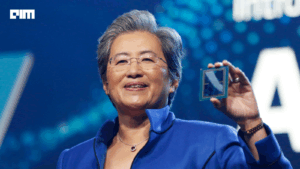Cisco’s latest results suggested that human capital when paired with the right AI tools can be just as powerful a growth engine as automation itself. While Amazon, Microsoft, and Accenture have trimmed staff in pursuit of AI efficiency, Cisco is teaching its engineers to code faster, think creatively, and build smarter with AI. And that investment in human capital just powered one of its strongest quarters in years.
Cisco reported $14.88 billion in revenue for the first quarter of fiscal 2026, up 8% from a year earlier, and earnings of $1 per share, surpassing analyst expectations. Net income rose to $2.86 billion, and the company raised its full-year guidance to $60.2–$61 billion in revenue and $4.08–$4.14 in adjusted earnings per share.
“The widespread demand for our technologies highlights the critical role of secure networking and the value of our portfolio as customers move quickly to unlock the potential of AI,” CEO Chuck Robbins told analysts. Shares climbed nearly 8% in late trading after the announcement, marking Cisco’s fourth consecutive quarter of growth.
Betting on People, Not Cuts
Robbins has been one of the few major CEOs to publicly push back. “I don’t want to get rid of a bunch of people right now,” he told CNBC in August. “I just want our engineers we have today to innovate faster and be more productive.”
Inside Cisco, that philosophy has turned into a quiet revolution. Seventy percent of the company’s 20,000 developers now use AI coding assistants like Cursor, Windsurf, and GitHub Copilot at least once a month, according to CIO Fletcher Previn. And AI-generated code accounts for 25% of all software written at Cisco up from just 4% a year ago.
That productivity push is changing not only how Cisco builds software but also how it hires. Scott McGuckin, Cisco’s global head of talent acquisition, said AI adoption has become a key differentiator in recruitment. “For technical hires today, we look for relevant coding and engineering skills,” he said. “But what really moves the needle is knowledge of AI in context—responsible AI, bias detection, explainability.”
Cisco has also expanded skills-based hiring in fiscal 2023, 30% of entry-level hires had no college degree, and that number is expected to rise. “Those who take advantage of AI tools show me their creativity, productivity, and strategic thinking,” McGuckin added.
Cisco’s people-first approach isn’t isolated. It co-leads the AI Workforce Consortium, alongside Accenture, Google, IBM, Microsoft, and Intel. The coalition recently found that seven of the ten fastest-growing ICT jobs are AI-related and published 250 learning recommendations to help workers stay competitive.
That investment in learning may be the company’s most overlooked advantage. While others spend billions on infrastructure alone, Cisco’s AI edge comes from the engineers building it equipped with both the tools and the understanding to use them.
The AI Infrastructure Windfall
Cisco’s AI-ready workforce is fueling its expanding infrastructure business. At its annual Partner Summit, Jeetu Patel, executive vice president of security and collaboration, showcased new products like Cisco Unified Edge, an integrated compute, network, and storage platform designed for distributed AI workloads across hospitals, retail stores, and factories. “We’ve massively simplified inferencing to make it plug and play at the edge,” Patel wrote in a LinkedIn post.
The company also introduced the Cisco 8223 routing system, powered by the Silicon One P200 chip, the industry’s first 51.2 Tbps standalone routing chip, enabling massive AI clusters to connect securely across data centers. In partnership with NVIDIA, Cisco launched the N9100 Data Center Switch, built on NVIDIA Spectrum-X Ethernet silicon, to support AI-native workloads at scale.
Those innovations helped drive a 15% increase in networking revenue to $7.7 billion, beating Wall Street estimates. Robbins told investors that AI infrastructure orders from hyperscalers hit $1.3 billion, up from $800 million the prior quarter, and projected $3 billion in AI infrastructure revenue for 2026.
Balancing Growth and Reality
Cisco’s AI story isn’t without challenges. Its security software unit saw a 2% drop to $1.98 billion, and collaboration tools fell 3%. The company’s $28 billion acquisition of Splunk in 2024 was aimed at shoring up those areas, but integration takes time. Still, investors are optimistic with Cisco’s stock is up 25% this year, outpacing the Nasdaq’s 21% gain.
Robbins told analysts that the AI opportunity “will ramp up during the second half of the fiscal year” and that Cisco sees “a growing pipeline in excess of $2 billion” for high-performance networking products across sovereign, neocloud, and enterprise customers.
Cisco’s transformation offers a clear counterpoint to the prevailing Silicon Valley narrative that automation replaces people. At Cisco, it’s augmenting them. By tying workforce development directly to financial performance, Robbins has made AI both a productivity engine and a retention strategy.
The company’s results and rising market confidence suggest that approach works. As Robbins put it, “I just want our engineers to innovate faster and be more productive.”










